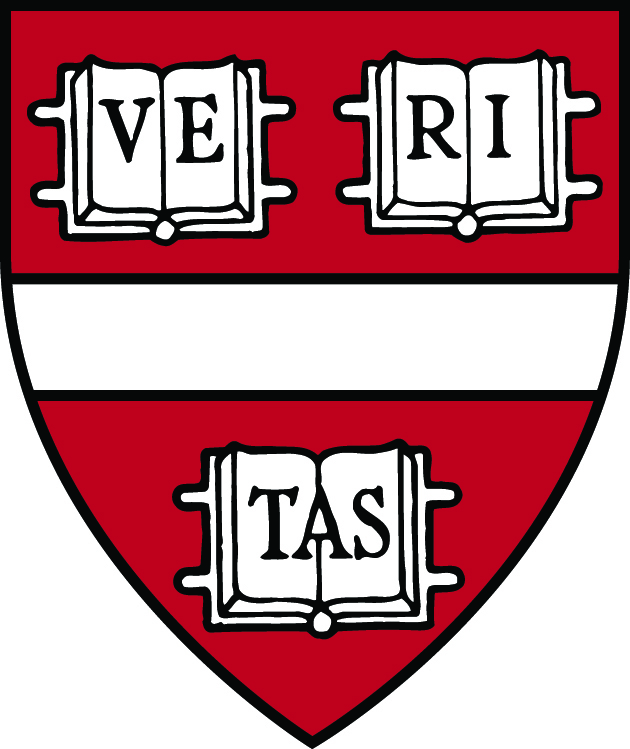
















|
|||||

|
Introduction to Research
Sachdev's research describes the consequences of quantum entanglement on the macroscopic properties of natural systems. He has made extensive contributions to the description of the diverse varieties of states of quantum matter, and of their behavior near quantum phase transitions. Many of these contributions have been linked to experiments, especially to the rich phase diagrams of the copper-oxide high temperature superconductors. Sachdev's research has also exposed remarkable connections between the nature of multi-particle quantum entanglement in certain laboratory materials, and the quantum entanglement in astrophysical black holes, and these connections have led to new insights on the entropy and radiation of black holes proposed by Stephen Hawking.
For more information, see also Sachdev's Wikipedia page, YouTube channel, and lectures on the Perimeter Institute Archive and at KITP, Santa Barbara. See also
- Dirac Conversations, International Centre for Theoretical Physics, Trieste, April 23, 2024.
- Public lecture on Quantum entanglement in nature [Poster; PDF; Keynote; Video], Institute Lecture, Indian Institute of Technology, Delhi, January 3, 2024.
- Public lecture on Ultra-spooky action at a distance: from quantum materials in the lab to black holes [PDF; Keynote; Video], Simons Foundation, New York, January 21, 2020
- Cafe talk on Quantum entanglement: "Spooky action at distance" in the lab, and in black holes [PDF; Keynote; Video], Tilde Cafe, Branford CT, November 9, 2019.
- Interview with Dirac Medal Winners, International Centre for Theoretical Physics, Trieste, March 28, 2019.
- Chai with Manju, Interview with INE News, Oct 22, 2018.
- Interview in the Times of India, Sep 11, 2018.
- Black Holes and Revelations, Discover magazine, November 2017, page 70.
- Public Lecture on Quantum entanglement, strange metals, and black holes, Simons Foundation, New York, February 8, 2017 [PDF; Keynote; Video]
- Taming Superconductors With String Theory, Interview in Quanta Magazine, January 21, 2016. Also in Scientific American.
- Dirac Lecture [PDF, Video] on Quantum Entanglement and Superconductivity at the University of New South Wales upon receiving the Dirac Medal for the Advancement of Theoretical Physics, September 1, 2015.
- Public Lecture on Quantum Entanglement and Superconductivity, Perimeter Institute for Theoretical Physics, Waterloo, Canada, October 1, 2014 [Video; PDF; Keynote; Trailer; Interview 1; Interview 2].
- Biography at the National Academy of Sciences
- Public Lecture (Video) on Quantum Entanglement and Superconductivity, Wheeler Opera House, Aspen CO, March 18, 2014, hosted by the Aspen Center for Physics
- Videos of the Salam Distinguished Lectures 2014, International Center for Theoretical Physics, Trieste, Italy, January 27-30, 2014.
- Interview at the International Center for Theoretical Physics, Trieste, Italy, January 28, 2014.
- Strange and Stringy, article on the connections between condensed matter physics and string theory, Scientific American 308, 44 (January 2013)
- A profile and an interview in the Harvard Gazette.
5 selected papers with commentaries
20 selected papers with commentaries
Research Highlights
Sachdev has studied the nature of quantum entanglement in two-dimensional antiferromagnets, introducing several key ideas in a series of papers in 1989-1992, and reviewed in his book Quantum Phases of Matter. The first complete emergent gauge theory with time-reversal symmetry was introduced. The importance of the analog of 't Hooft/Lieb-Schultz-Mattis anomalies was pointed out, and these anomalies have played a central role in the theory of gapped and gapless quantum spin liquids, including those realized by `deconfined critiality'. By considering Higgs transitions of the emergent U(1) gauge field, the first theory of a gapped fractionalized spin liquid phase with time-reversal symmetry, the Z2 spin liquid, was presented. This was described by an emergent Z2 gauge theory, with the same structure of excitations that appeared later in Kitaev's solvable toric code model. This framework also led to the discovery in 2002 of quantum spin liquid states which have metallic Fermi surfaces in `fractionalized Fermi liquids (FL*)'. The FL* Fermi surface does not enclose the Luttinger volume, and this is allowed because the 't Hooft/LSM anomaly of a quantum spin liquid can offset the Luttinger count.
Sachdev has developed the theory of quantum criticality, elucidating its implications for experimental observations on materials at non-zero temperature. In this context, he proposed a solvable model of complex quantum entanglement in a metal which does not have any particle-like excitations in 1993: an extension of this is now called the Sachdev-Ye-Kitaev (SYK) model. These works have led to a theory of quantum phase transitions in metals in the presence of impurity-induced disorder, and a universal theory of strange metals.
Sachdev's theories apply to a wide variety of correlated electron materials, including the copper-oxide materials exhibiting high temperature superconductivity. Many puzzling features of the `pseudogap' phase of these materials are addressed by his works on the interplay between antiferromagnetism and superconductivity, using the theory of critical quantum spin liquids without quasiparticles.
A connection between the structure of quantum entanglement in the SYK model and in black holes was first proposed by Sachdev in 2010, and these connections have led to extensive developments in the quantum theory of black holes.
Quantum criticality, superconductors, and black holes
Extreme examples of complex quantum entanglement arise in metallic states of matter without quasiparticle excitations, often called strange metals. Such metals are invariably present in higher temperature superconductors, above the highest transition temperatures for superconductivity. The strange metallicity and superconductivity are manifestations of an underlying quantum critical state of matter without quasiparticle excitations. Remarkably, there is an intimate connection between the quantum physics of strange metals in modern materials (which can be studied in tabletop experiments), and quantum entanglement near black holes of astrophysics.
This connection is most clearly seen by thinking more carefully about the defining characteristic of a strange metal: the absence of quasiparticles. In practice, given a state of quantum matter, it is difficult to completely rule out the existence of quasiparticles: while one can confirm that certain perturbations do not create single quasiparticle excitations, it is almost impossible to rule out a non-local operator which could create an exotic quasiparticle in which the underlying electrons are non-locally entangled. Using theories of quantum phase transitions, Sachdev argued (Quantum Phase Transitions, Physical Review B 56, 8714 (1997)) instead that it is better to examine how rapidly the system loses quantum phase coherence, or reaches local thermal equilibrium in response to general external perturbations. If quasiparticles existed, dephasing would take a long time during which the excited quasiparticles collide with each other. In contrast, states without quasiparticles reach local thermal equilibrium in the fastest possible time, bounded below by a value of order (Planck constant)/((Boltzmann constant) x (absolute temperature)). Sachdev proposed (Physical Review Letters 70, 3339 (1993), Physical Review X 5, 041025 (2015)) a solvable model of a strange metal (a variant of which is now called the Sachdev-Ye-Kitaev (SYK) model), which was shown to saturate such a bound on the time to reach quantum chaos ( Journal of High Energy Physics 2016, 106 (2016)).
We can now make the connection to the quantum theory of black holes: quite generally, black holes also thermalize and reach quantum chaos in a time of order (Planck constant)/((Boltzmann constant) x (absolute temperature)), where the absolute temperature is the black hole's Hawking temperature. And this similarity to quantum matter without quasiparticles is not a co-incidence: Sachdev argued (Physical Review Letters 105, 151602 (2010)) that the SYK model maps holographically to the low energy physics of charged black holes in 4 spacetime dimension. Also key to this connection were the facts that in the limit of zero temperature, charged black holes have a non-zero entropy proportional to the horizon area, and the SYK model has a non-zero entropy density (Physical Review B 63, 134406 (2001)). Indeed, the SYK model was the first model to exhibit a non-vanishing zero temperature entropy density without an exponentially large ground state degeneracy, and so the holographic mapping implied that charged black holes share this feature.
These and other related works on quantum criticality by Sachdev and collaborators have led to valuable insights on the properties of electronic quantum matter, and on the nature of Hawking radiation from black holes. Solvable models related to gravitational duals and the SYK model have led to the discovery of more realistic models of quantum phase transitions in the high temperature superconductors and other compounds. Advances in the theory of quantum transitions in metals in the presence of impurities have led to a universal theory of strange metals which applies across a wide range of correlated electron compounds. Such predictions (Physical Review B 78, 115419 (2008), Science 381, 790 (2023), Physical Review Letters 133, 186502 (2024)) have been connected to experiments on graphene (Science 351, 1055 (2016), Science 351, 1058 (2016)) and the cuprate superconductors (Nature Communications 14, 3033 (2023)). The SYK model plays a key role in the computation of the density of low energy quantum states of non-supersymmetric charged black holes in 4 spacetime dimensions (arXiv:2209.13608, arXiv:2304.13744), and provides the underlying Hamiltonian system upon which advances on the Page curve of entanglement entropy of evaporating black holes have been tested (see arXiv:2201.03096 for a review).
Sachdev has also developed the theory of critical quantum spin liquids which feature fractionalization and emergent gauge fields, along with absence of quasiparticles. Such spin liquids with gapless excitations play an important role in the theory of the cuprate superconductors.
Resonating valence bonds and Z2 quantum spin liquids
P.W. Anderson proposed in 1973 that Mott insulators realize antiferromagnets which could form resonating valence bond (RVB) states i.e. quantum spin liquid states with an energy gap to spin excitations without breaking time-reversal symmetry. (Anderson also proposed in 1987 that RVB spin correlations are important for high temperature superconductivity in the cuprates; but as noted above, Sachdev has instead argued that the relevant states are critical quantum spin liquids without quasiparticles.) It was conjectured that such RVB states have excitations with fractional quantum numbers, such as a fractional spin 1/2. The existence of such RVB ground states, and of the deconfinement of fractionalized excitations was first established by Read and Sachdev (Physical Review Letters 66, 1773 (1991)) and Wen (Physical Review B 44, 2664 (1991)) by the connection to a Z2 gauge theory. Sachdev was also the first to show that the RVB state is an ''odd'' Z2 gauge theory, (Physical Review B 44, 686 (1991), Journal of the Physical Society of Japan 69, Suppl. B, 1 (2000), Reports on Progress in Physics 82, 014001 (2019)). An odd Z2 spin liquid has a background Z2 electric charge on each lattice site (equivalently, translations in the ''x'' and ''y'' directions anti-commute with each other in the super-selection sector of states associated with a Z2 gauge flux (also known as the ''m'' sector)); this is another example of a 't Hooft/LSM anomaly. Sachdev showed that antiferromagnets with half-integer spin form odd Z2 spin liquids, and those with integer spin form even Z2 spin liquids. Using this theory, various universal properties of the RVB state were understood, including constraints on the symmetry transformations of the anyon excitations. Sachdev also obtained many results on the confinement transitions of the RVB state, including restrictions on proximate quantum phases and the nature of quantum phase transitions to them.The topological order (i.e. ground state degeneracies on 2-manifolds) and anyons of Z2 quantum spin liquids are identical to those which appeared later in the solvable toric code model, which plays a key role in quantum error correction in qubit devices.
Z2 spin liquids are ground states of spin models on the kagome lattice, and this has been connected to experiments on correlated electron materials and arrays of trapped Rydberg atoms.

